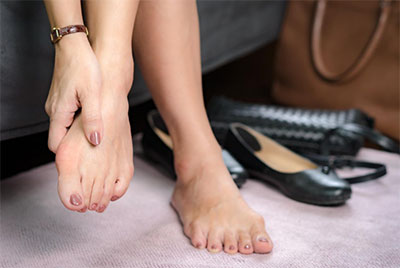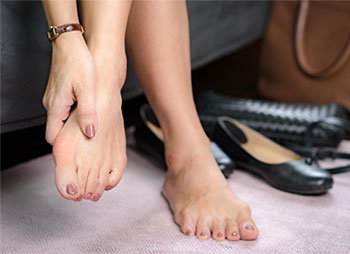
Foot deformities can not only cause problems for your feet but can also lead to imbalances in the alignment of your entire musculoskeletal system impairing your ability to move comfortably and efficiently. While non-surgical interventions can effectively alleviate symptoms, some cases may demand surgical correction. Understanding when surgery is necessary is vital for restoring function and quality of life.
Understanding Foot Deformities
Foot deformities occur due to various factors, including genetics, injuries, or underlying medical conditions such as arthritis. Common types include:
- Bunions: A bony bump that forms at the base of the big toe, causing pain and alignment issues.
- Hammertoes: A deformity where toes become curled or bent due to muscle imbalance.
- Flat Feet:A condition where the arch of the foot collapses, leading to discomfort and instability.
- Clubfoot: A congenital deformity where the foot is twisted out of shape or position.
- Cavovarus Foot: A condition characterized by a high arch and inward turning of the heel, often leading to instability and difficulty walking.
- Charcot Foot: A severe foot deformity caused by nerve damage (commonly from diabetes), leading to weakened bones, fractures, and changes in foot shape.
When Non-Surgical Treatments Fall Short
In many cases, non-surgical treatments like orthotic devices, physical therapy, and medication can help manage symptoms. These approaches aim to reduce pain, improve mobility, and prevent the condition from worsening. However, surgery becomes necessary when:
- Chronic Pain Persists: If pain continues despite conservative measures, surgical intervention may be required.
- Functional Limitations: Difficulty walking, wearing shoes, or performing daily tasks can indicate the need for surgery.
- Progressive Deformity: When the deformity worsens over time, corrective surgery might prevent further complications.
Types of Surgical Procedures for Foot Deformities
Surgical options vary based on the type and severity of the deformity. Common procedures include:
- Bunionectomy: Removal of the bony bump and realignment of the joint.
- Tendon Transfer: Used for conditions like hammertoes to balance muscle function.
- Osteotomy: Cutting and repositioning bones to correct alignment.
- Arthrodesis: Fusing bones together to stabilize the foot.
The Road to Recovery
Post-surgery, recovery involves rest, physical therapy, and gradual return to activities. Following your surgeon’s instructions ensures optimal healing and long-term success.
While surgery may seem daunting, it can provide lasting relief and improved mobility for those with severe foot deformities. Book an appointment with Dr. Ho, foot and ankle specialist, to determine the best course of action tailored to your condition.
AUTHOR: Dr. Bryant S. Ho is board-certified in orthopedic surgery and is trained in the operative and non-operative management of adolescent and adult foot and ankle disorders. Dr. Ho places a strong emphasis on customizing his care for each patient to ensure successful outcomes. He provides all treatment options, including preventative care, conservative management, and operative intervention.



